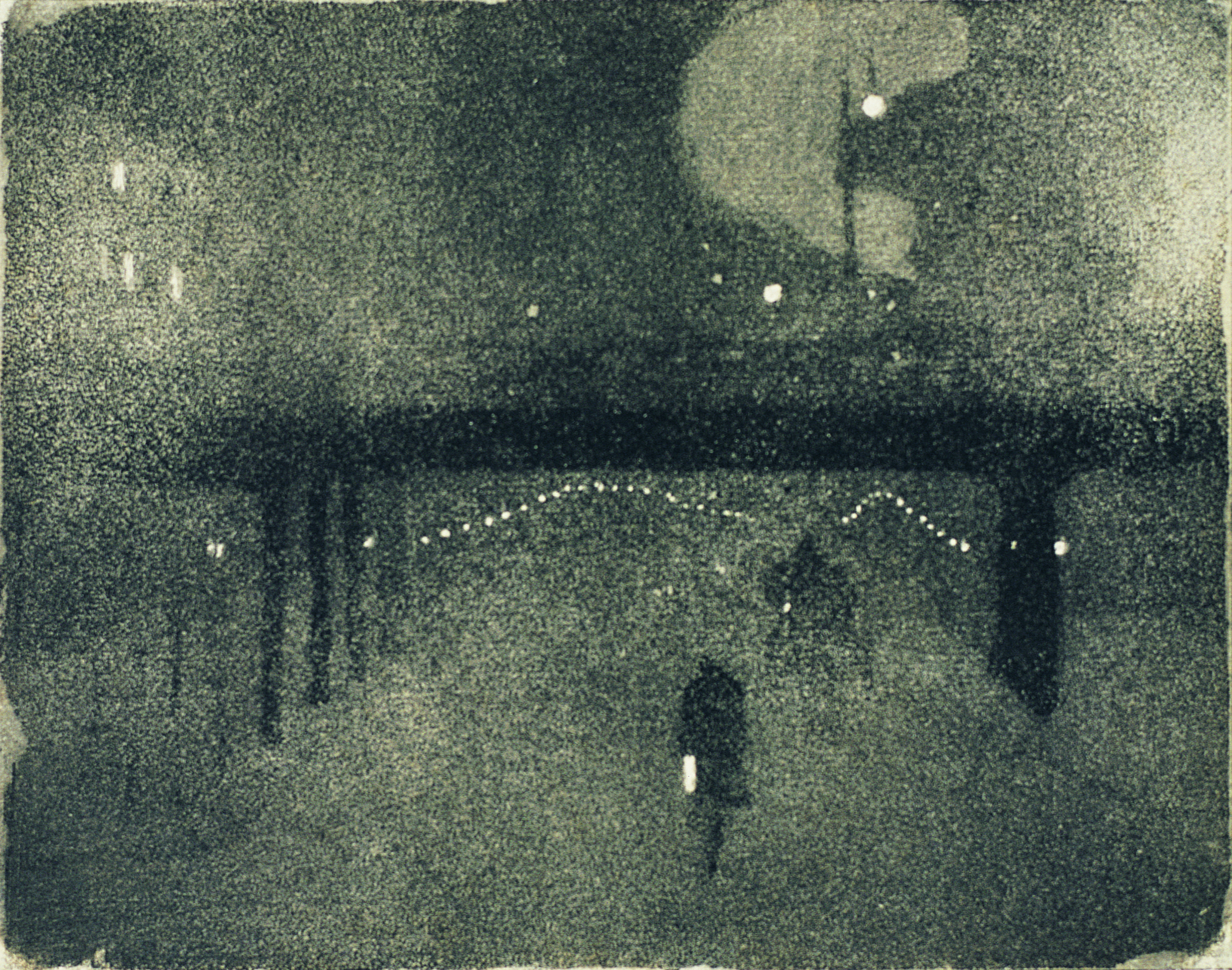Avenue du Maine by Jessie Traill, 1908

Jessie TRAILL, Avenue du Maine 1908, aquatint. QUT Art Collection. Gift of Robert Gibson under the Cultural Gifts Program, 2000
Avenue du Maine by Jessie Traill, 1908
This work is an aquatint, a printmaking technique that produces tonal effects by using acid to eat into the printing plate creating sunken areas into which hold the ink. It measures 22 centimetres tall by 30.5 centimetres wide. The work has the quality of an old photograph rendered out of focus.
Gas lit lanterns line a long avenue in Paris. Fairy lights dance across the middle of the artwork, bright pin pricks of light, dotting the scene. Tall slender trees line the avenue on both sides. In the top left-hand corner, an apartment block lit from within provides a soft glow from rectangular windows. The scene is muted, indistinct and dark. A streetlight in the upper right hand corner hovers amongst fog and cloud creating an atmospheric setting reminiscent of a cold and bleak winter night.
Towards the bottom of the work, slightly to the right walks a lone figure, buffeting themselves from the elements and the cloak of night by clasping a single lit lantern providing navigation and light.
Jessie Traill is renowned for her etching prints of immersive landscapes of both the Australian bush and rapidly developing modernity. Before WWI, Traill studied in Paris and London, which influenced her interests in Art Nouveau and lyrical considerations of industrial structures. This work, and the earliest produced in the exhibition, is named after a large main street in Paris, Avenue du Maine, and infuses a soft sentimentality to the urban scene.
The work is displayed in a light oak frame and the artist has handwritten the title of the work, Avenue du Maine in the bottom left-hand corner. In the bottom centre is written ‘Acc. 1948 Betsy Gibson from’, and in the far-right hand corner the artist has signed her name in pencil J G A Traill and provided the date 1908.

